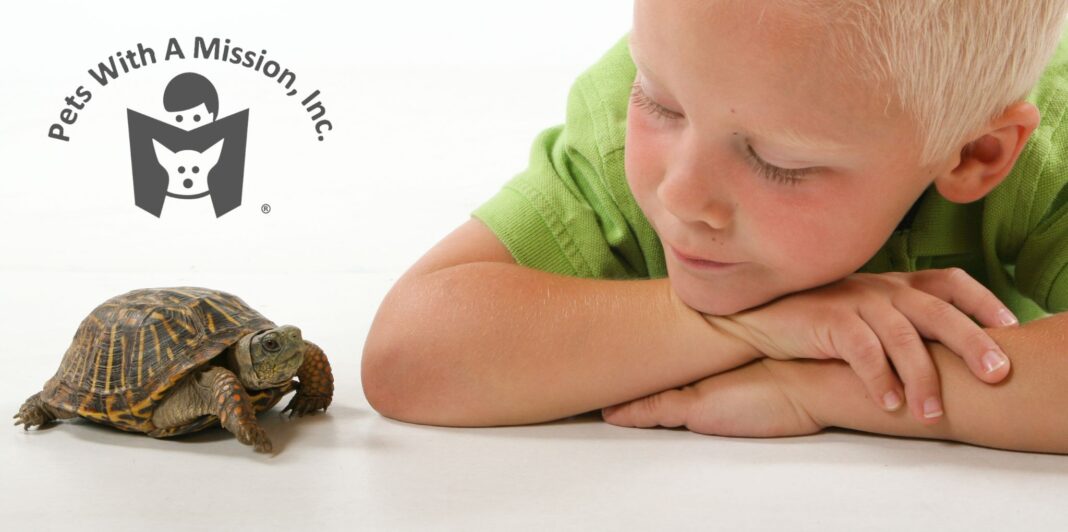Pets with a Mission, Inc. More Decisions – Which Pet?
When thinking about a new pet, most people imagine an adorable kitten or a fluffy puppy. Either of these could be an excellent choice but there are other options that may be a better fit for your lifestyle such as a senior dog or cat or one of the many other animals who need homes. How about a rabbit, guinea pig, hamster or ferret? Maybe you would prefer a parrot, canary or chickens. Want something a bit more unusual? A potbellied pig, an iguana, a turtle, or a snake or two may be just what is needed.
Do you have a gender preference? Both males and females can be excellent pets. A male dog or cat generally is larger than a female. They may be more interested in roaming the neighborhood, marking territory, and they may be more aggressive than females. Females may be calmer and more loving but that is not always true. Unless spayed, females will go into heat twice a year. It will be messy and require them to be kept away from males unless babies are desired. Then, the babies need homes. Other people just want a pet they can emotionally connect with and are unconcerned with the gender of the animal.
The age of the animal may be a concern. Babies are cute but they require a lot of care. Initially, they require multiple feedings a day which is time consuming. Also, they go through teething and chewing, need potty training, and need to be taught manners on the way to adulthood. Youngsters (teenagers) go through times when they make poor decisions and will not listen. Adult animals are past the chewing stage but may not be potty trained or have good manners but training could fix that. Seniors can be excellent pets. They may come with some manageable health issues and may be less active than younger animals but seniors still have a lot of love to give. Seniors may need to be rehomed because their person died or entered a care facility where they could not keep their pet. At other times, seniors are turned in to shelters just because they are old, have health issues, or the family wants a younger pet.
The adult size of the new animal may be important too. Dogs come in more variety of sizes than cats. Large dogs (over 50 pounds) may enjoy playing with active children and accompanying people on their activities but they take up more space on the sofa but large dogs are more to love. They eat a lot. Large dogs may not be the best for an apartment or small house because of their size. Medium sized dogs (20 to 50 pounds) are the perfect size for many people, not too big and not too small. Medium sized dogs can keep up with hiking, jogging and ball playing with active families. They could be happy in an apartment as long as they receive plenty of walks and playtime. Small dogs (under 20 pounds) are great in small houses and apartments. A moderately paced walk around the block would be enough exercise for most individuals. They are excellent lap warmers on cold days. Smaller dogs usually have a more delicate build so they may do better with older children and adults who can handle them with care. They may not be up to a five-mile hike but they would love to go along while being carried in a comfy backpack.
The activity level of the new pet is very important but seldom thought about. High energy dogs need hours of exercise and play each day or they may develop unwanted behaviors. Some high energy breeds are: Corgis, Australian Cattle Dogs, Border Collies, Doberman Pinchers, and Siberian Huskies. Moderately active breeds are active at times but they also have a chill mode where they can be happy just sitting with their people. They enjoy a brisk walk and a snooze on the sofa. Some moderately active breeds include: Collies, Basset Hounds, and West Highland White Terriers. Low activity level dogs are the couch potatoes and lap warmers of the dog world. A brief stroll around the block suits them just fine. Chihuahuas, Lhasa Apso, Maltese, and Pomeranians are lower activity breeds. A mismatch between an animal and family could be a disaster. A senior with mobility issues would not be a good match with a high-energy Border Collie but that person might love having a Chihuahua in her life while the Border Collie might be a great match for a distance runner.
Does it matter if the animal is a pure bred or mixed breed? Pure bred animals have two parents of the same known breed, such as two Maine Coon cats or two Siberian Huskies. With pure bred youngsters, their adult size, appearance, and breed characteristics are already known. Generally, pure bred animals are obtained from breeders. Pure bred animals do end up in shelters and rescues but they lack registration papers. Mixed breed animals have parents of two different breeds such as one parent is a German Shepherd and the other is a Labrador Retriever or the parents are of unknown origin. The puppy may resemble a specific breed (Sheltie mix) as a baby but have a different appearance when full grown (Australian Shepherd mix). Mixed breeds have unknown health and behavior histories. That said, mix breed animals have just as much love to give and companionship to share as their pure bred cousins.
There is so much to consider before deciding to get a new pet. It is so important that the decision is carefully thought out and not an impulse purchase. Because the pet will live with the family for many years, they deserve the right loving home and the family deserves the pet that best fits their needs. A well thought out decision will make that happen.















